The purpose of this page is to provide some information and images on common local creatures that we may encounter during our dives. The images were mostly taken at our local sites of Whytecliff and Porteau Cove, although some pictures from nearby sites on the Sunshine Coast and Vancouver Island have been included as well. For those who are curious about what kind of critters they may encounter, or those who want to know a little more about what they are seeing during dives, this page is for you!
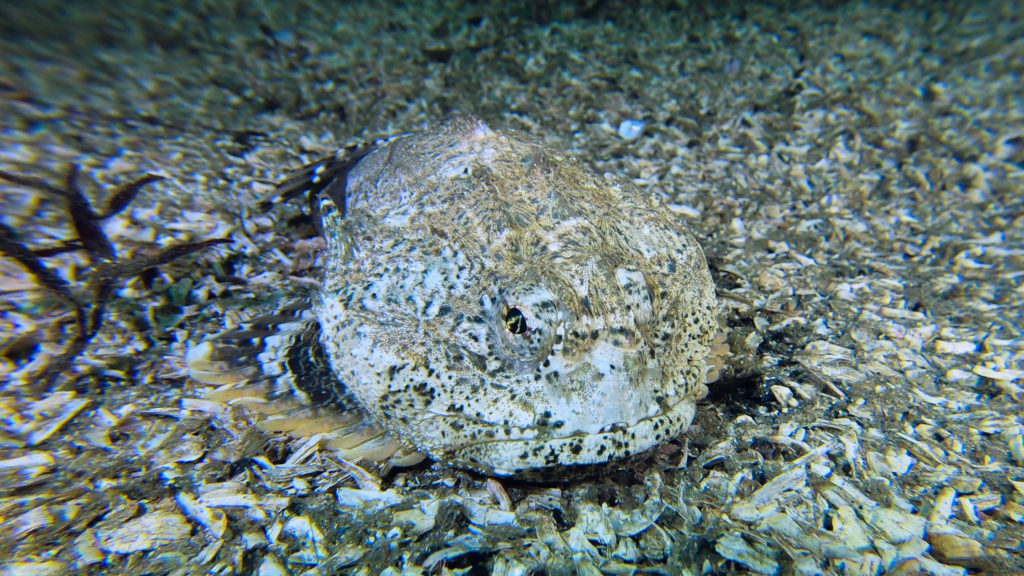
Buffalo Sculpin
Scientific Name: Enophrys bison
Location: Alaska to California
Habitat: Intertidal to 65 ft
Camouflaged and motionless, this fish is easily overlooked even by experienced divers.

Fried Egg Jellyfish
Scientific Name: Phacellophora camtschatica
Location: Japan, Siberia, Alaska to Chile
Habitat: Pelagic
Like it’s name, the fried egg jellyfish looks like it was freshly cracked into a pan. This jellyfish primarily feeds on other jellyfish.
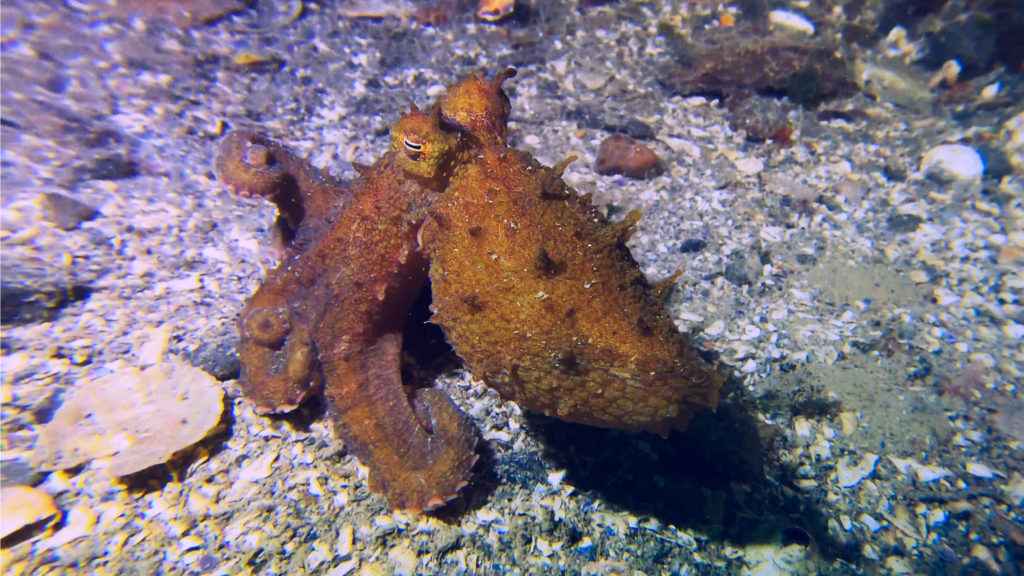
Giant Pacific Octopus
Scientific Name: Enteroctopus dofleini
Location: Japan, Siberia, Alaska to Mexico
Habitat: Subtidal to 5,000 ft
The largest octopus in the world, giant pacific octopus have been recorded with an arm span up to 24 ft and a total weight of 160 lb! This baby octopus has a whopping arm span of 5 inches.
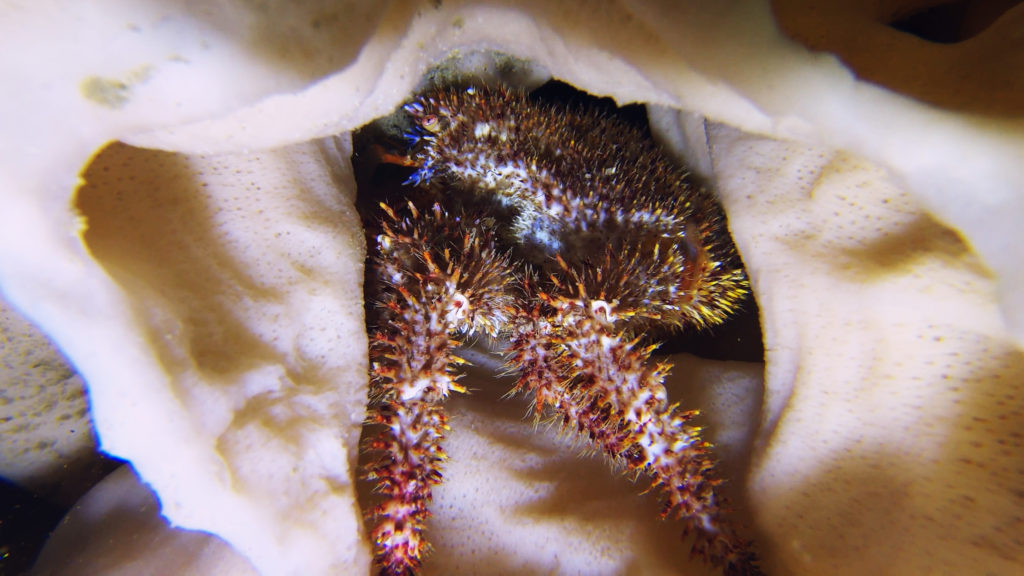
Hairy-Spined Crab
Scientific Name: Acantholithodes hispidus
Location: Alaska to California
Habitat: Subtidal to 550 ft
Covered in hair-tipped spines, this type of crab has orange-coloured claws lined with white molar-like teeth. The crab in the picture was sitting comfortably in a cloud sponge.
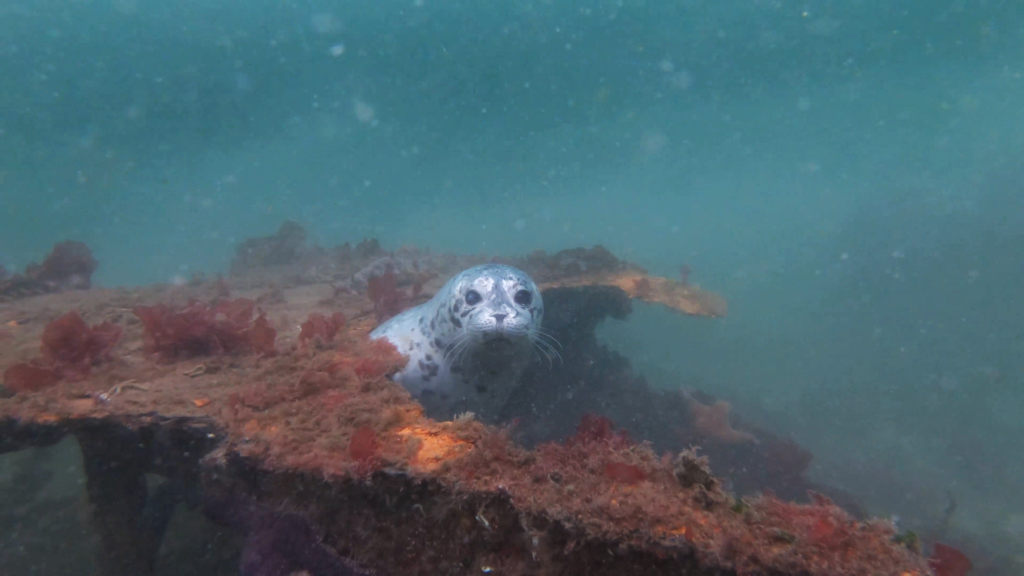
Harbor Seal
Scientific Name: Phoca vitulina
Location: Alaska to California, Northern Atlantic, Baltic and North Sea
Habitat: Coastal
Harbor seals are always a welcome sight to see, resting comfortably on rocks just before a dive. Seeing them underwater is a much rarer find!
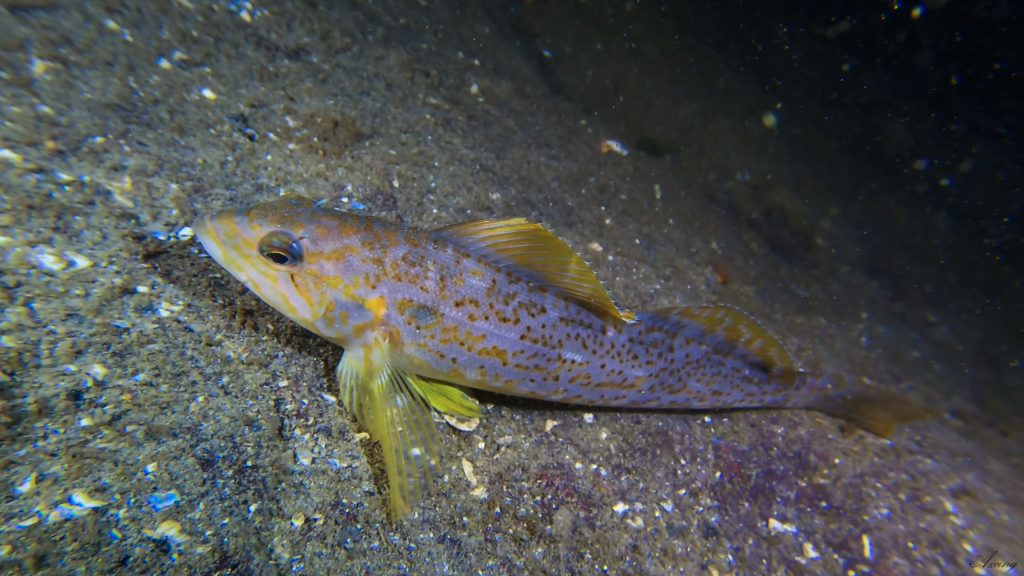
Kelp Greenling
Scientific Name: Hexagrammos decagrammus
Location: Alaska to California
Habitat: Intertidal to 150 ft
The kelp greenling female often lays her eggs in giant acorn barnacle casing.

Lingcod
Scientific Name: Ophiodon elongatus
Location: Alaska to Mexico
Habitat: Subtidal to 6,600 ft
Overfishing has significantly reduced the population of this species. One of the larger local fish, these guys are always a treat to encounter during a dive!
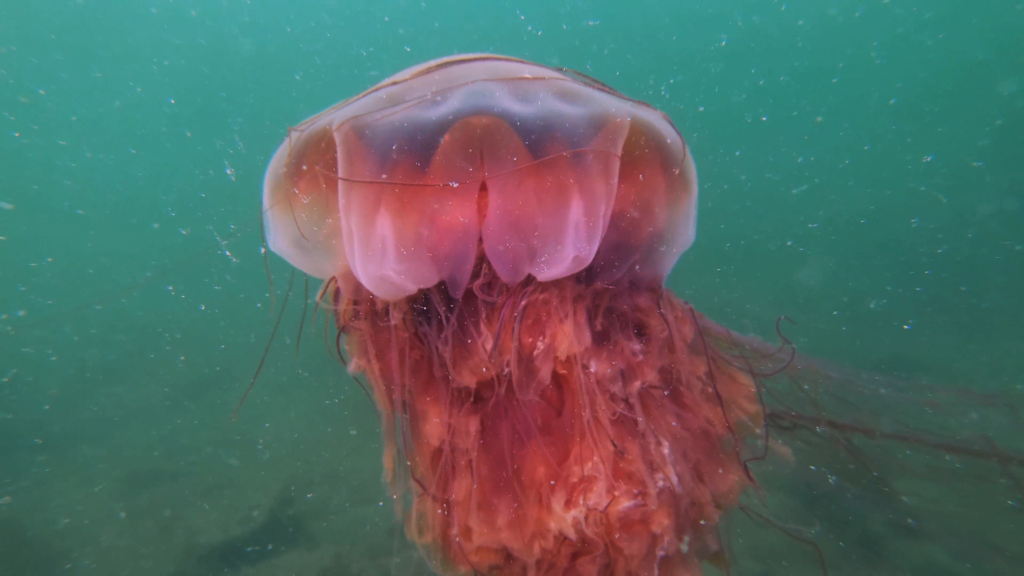
Lion’s Mane
Scientific Name: Cyanea capillata
Location: Alaska to Mexico
Habitat: Pelagic
The world’s largest jellyfish with tentacles up to 100 ft long! Stings from this jellyfish really hurt.
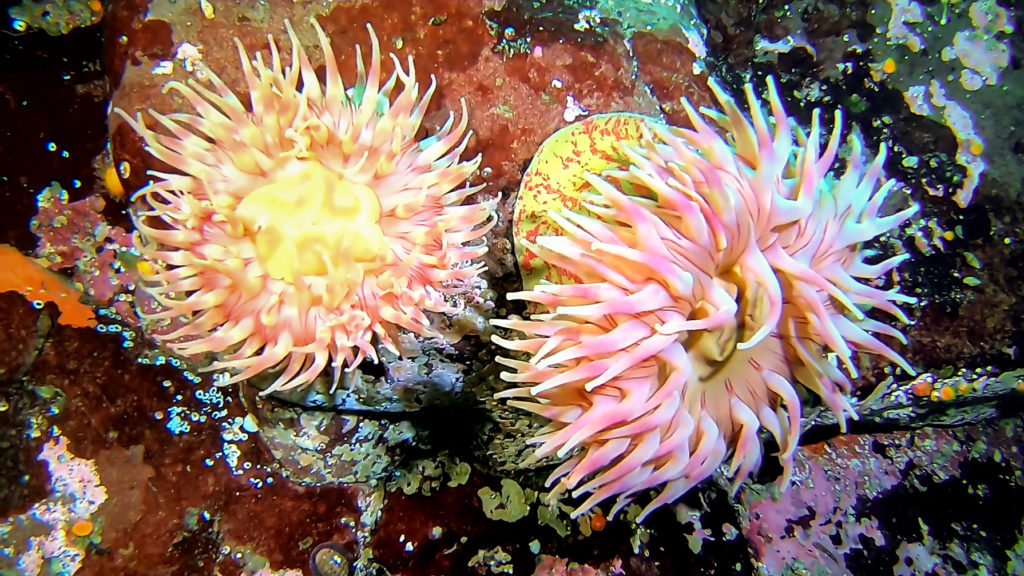
Painted Anemone
Scientific Name: Urticina crassicornis
Location: Alaska to California
Habitat: Intertidal to 100 ft
These anemone come in all sorts or colours, but can be distinguished by their long banded tentacles.
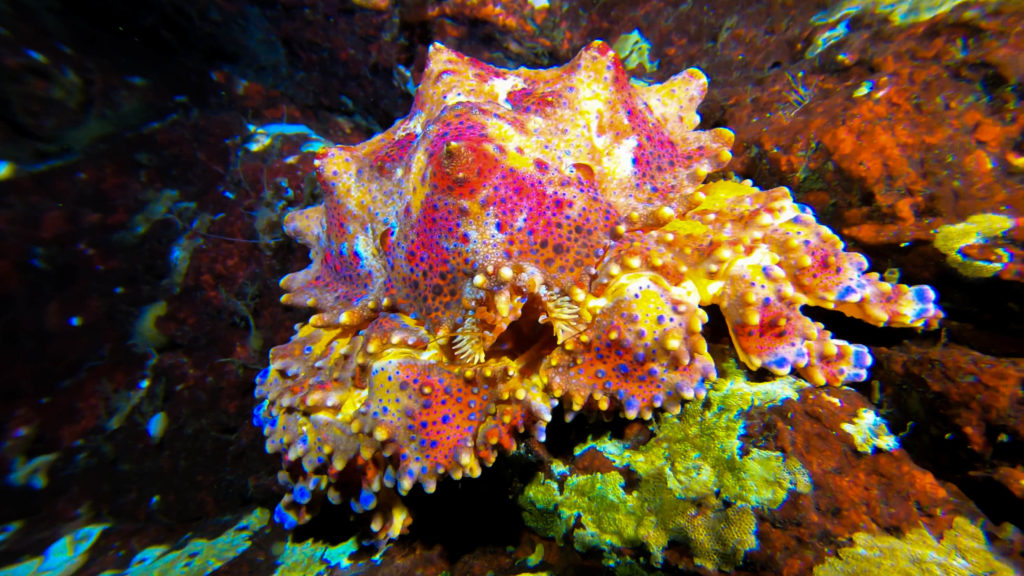
Puget Sound King Crab
Scientific Name: Lopholithodes mandtii
Location: Alaska to California
Habitat: Subtidal to 450 ft
Built like a tank, this crab starts out a uniform bright orange, but becomes more colourful as it reaches adulthood.
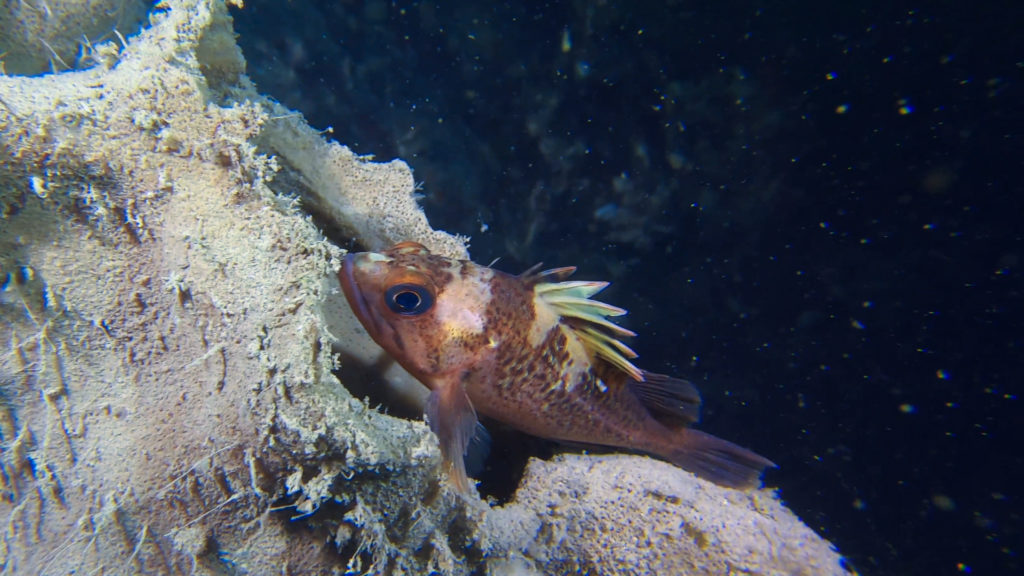
Quillback Rockfish
Scientific Name: Sebastes maliger
Location: Alaska to California
Habitat: Subtidal to 900 ft
This commonly seen rockfish can live up to 95 years.
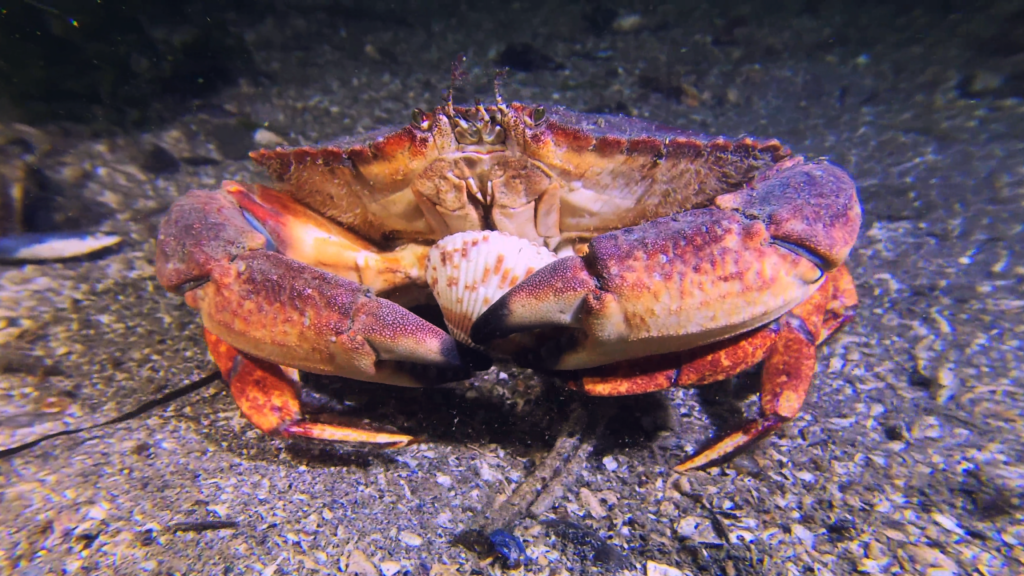
Red Rock Crab
Scientific Name: Cancer productus
Location: Alaska to Mexico
Habitat: Intertidal to 300 ft
This crab has very powerful pincers that can deliver a nasty nip. This one was happily clinging to a shell!

Spiny Dogfish Shark
Scientific Name: Squalus acanthias
Location: Alaska to Mexico, Northern Atlantic, Siberia
Habitat: Intertidal to 4,105 ft
Our local resident shark! Seeing this tiny shark during the summer months is fairly common.

Stellar Sea Lion
Scientific Name: Eumetopias jubatus
Location: Alaska to California
Habitat: Coastal
Glancing up from the nudibranch or anemone you were looking at to see one of these creatures gliding gracefully by is always a wonderful experience. In some nearby areas, stellar sea lions congregate in the thousands, making diving with them a possibility. In these areas, the sea lions have become used to divers and will come and play!
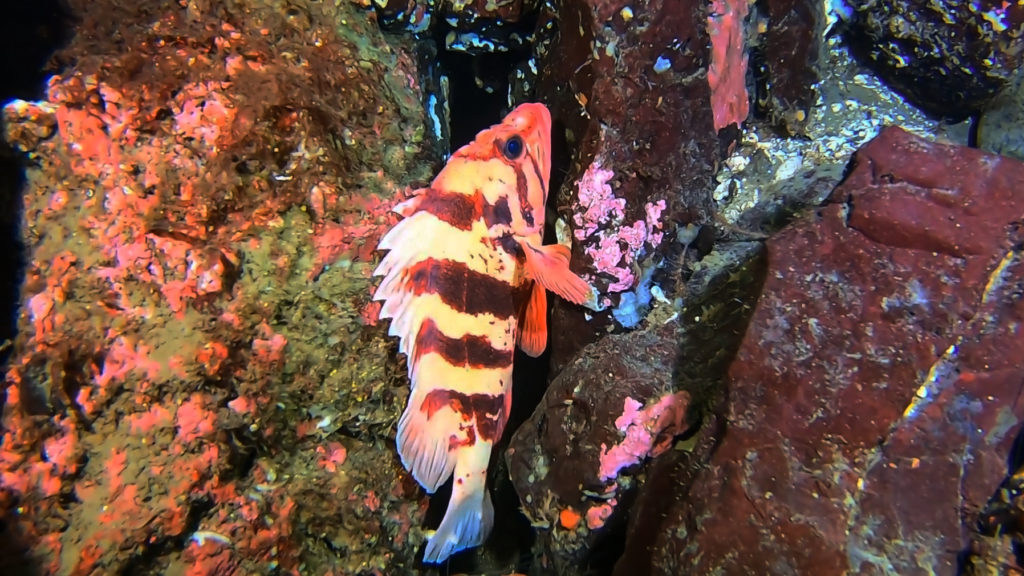
Tiger Rockfish
Scientific Name: Sebastes nigrocinctus
Location: Alaska to California
Habitat: Subtidal, surface to 984 ft
This type of rockfish is territorial and can often be found in it’s “home” crevice.
*Photo credit: Andrew Zang
*Reference: Marine Life of the Pacific Northwest – A Photographic Encyclopedia of Invertebrates, Seaweeds and Select Fishes by Andy Lamb and Bernard P. Hanby